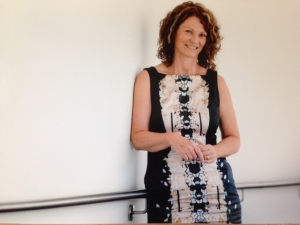Social disparity in osteoporosis: is it all in the DNA?
Research news
Deakin epidemiologist Dr Sharon Brennan-Olsen has established an international team of experts to propose an innovative model that explains the underlying mechanisms causing the different rates of osteoporosis amongst different socioeconomic groups.
A Senior Research Fellow, Dr Brennan-Olsen collaborated with senior researchers from the University of Manitoba (Canada), University of Cantabria (Spain), King’s College London (UK), Loyola University Chicago (USA), and Edward Hines Jr. VA Hospital (USA).
The team has proposed that DNA methylation might underpin the “social gradient” in osteoporosis. DNA methylation refers to the epigenetic mechanism used by cells to control gene expression; it is commonly used as a “signalling tool” that fixes genes in the “off” position.
The scientists based their research on the “allostatic load” theory, in which environmental challenges such as repeated or chronic stress can cause physiological wear and tear on the body as an organism as it works to maintain stability in response.
Dr Brennan-Olsen suggests that because social disadvantage increases stress throughout the lifespan, this primes the inflammatory signalling pathways, which are mediated by epigenetic modifications that lead to an enhanced state of inflammatory reactivity and oxidative stress - thus placing disadvantaged individuals at greater risk of osteoporosis.
“This conceptual model proposes that, in addition to the direct biological effects exerted on bone by factors such as physical activity and nutrition, the recognised socially patterned risk factors for osteoporosis and fragility fractures also act via epigenetic-mediated dysregulation of inflammation” she said.
Dr Brennan-Olsen leads the Health Equity Epidemiology Division in the IMPACT Strategic Research Centre at Deakin University.
She is also affiliated with the Australian Institute for Musculoskeletal Sciences (University of Melbourne) and the Institute for Health and Ageing (Australian Catholic University).
“It is imperative that we understand the extent to which biological mechanisms such as epigenetics reflect the psycho-social environment and influence the risk of osteoporosis and subsequent fracture,” Dr Brennan-Olsen said.
“This may yield novel entry points for intervention that can be used to reduce individual and population-wide risks of osteoporotic fracture.
“Our conceptual model is important because it shows that an epigenetic evidence-base may strengthen the importance of lifestyle modification and stress reduction programs, and help to reduce health inequities across social groups.
“Importantly, if biological underpinnings for the social gradient in fracture are identified, this has clear implications regarding the (re)prioritization of health care service delivery and targeted health communications between patient and practitioner, regarding lifestyle modification across the lifespan.”
The model will pave the way for a robust program of research that has now been initiated in Geelong by Dr Brennan-Olsen, and will further establish Deakin as a leader of innovative research in healthy ageing.
Dr Brennan-Olsen holds a Career Development Fellowship from the National Health and Medical Research Council of Australia, which will support her to undertake this research over the coming four years. She received the Professor Philip Sambrook Award 2015 for her research in this field, and this conceptual model was recently published in “Bone;” a leading international journal in the field of bone and mineral research.
Share this story
 Dr Sharon Brennan-Olsen, leader of the Health Equity Epidemiology Division at IMPACT SRC.
Dr Sharon Brennan-Olsen, leader of the Health Equity Epidemiology Division at IMPACT SRC.
